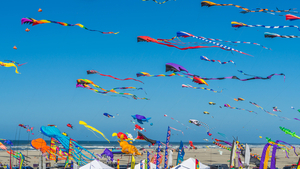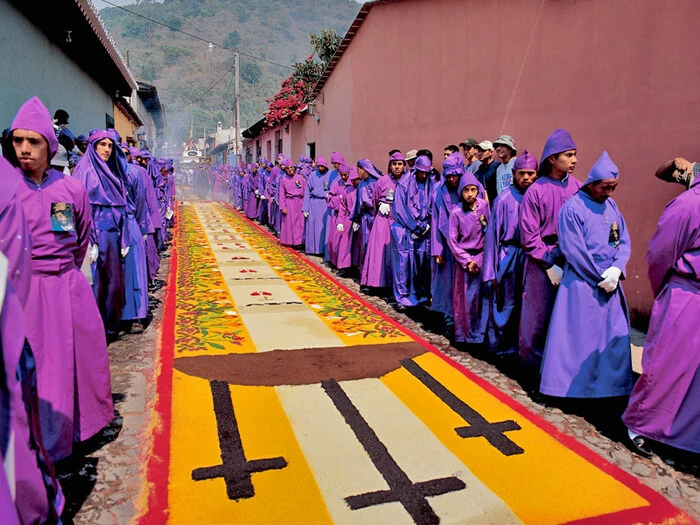Easter is a time of reflection, celebration, and tradition across the globe. While the core of Easter – commemorating the resurrection of Jesus Christ – remains the same, the ways in which different cultures observe this holy time vary widely. From the solemn to the celebratory, let’s embark on a journey exploring some of the most unique and fascinating Easter traditions around the world.
This diversity is a beautiful reflection of humanity’s vast cultural tapestry, showing how a single historical event can be interpreted and honored in myriad ways. Easter traditions, whether they involve elaborate processions, symbolic foods, or community games, speak to the heart of each culture’s identity and values.
They weave together stories of faith, renewal, and community spirit, inviting us to see beyond our differences and celebrate the common themes of hope and rebirth that Easter embodies. As we delve into these varied customs, we not only learn about the rich tapestry of global Easter celebrations but also gain insight into the universal human experience of seeking meaning and connection in our shared histories and rituals.
The Śmigus-dyngus of Poland
In Poland, Easter Monday is soaked in fun, quite literally. Known as Śmigus-dyngus, or Wet Monday, this tradition involves people drenching each other with water. Originally rooted in fertility rituals, today, it serves as an excuse for a nationwide water fight, welcoming spring with open arms and wet clothes.
The playful dousing is more than just a spirited activity; it harks back to pagan times when water was believed to possess powerful cleansing and life-giving properties. Over the centuries, it evolved into a Christian tradition symbolizing the washing away of sins and the onset of the new life spring heralds. On this day, no one is off limits, and the spirit of community and renewal is palpable.
Children and adults alike arm themselves with buckets, water guns, or anything that can carry water, taking to the streets to partake in this unique and joyous celebration. The tradition not only fosters a sense of community but also serves as a vibrant reminder of the country’s rich cultural tapestry, blending ancient customs with Christian beliefs in a celebration that is eagerly anticipated by all ages.
Guatemala’s Easter Festival in Antigua
Antigua, Guatemala, hosts the world’s largest Easter celebration, marked by a week-long series of events. The streets of Antigua come alive with processional marches, elaborate floats depicting Jesus and Mary, and intricately designed carpets of sand and colored sawdust. These vibrant alfombras, as they’re called, are painstakingly created by the local community, showcasing a blend of religious devotion and artistic expression.
Each carpet, rich in symbolism and color, tells a story from the Bible or reflects themes of nature and spirituality. As the processions move over them, it’s a reminder of the ephemeral nature of life and the enduring spirit of faith. The celebration culminates on Easter Sunday with fireworks, symbolizing the joy of resurrection.
This majestic display lights up the night sky, echoing the triumph of light over darkness and life over death. The entire week is a profound communal experience, drawing visitors from all over the world to witness a unique blend of Guatemalan culture, Christian faith, and artistry that transforms the cobblestone streets into a vivid tableau of history, spirituality, and celebration.
Norway’s Unique Påskekrim Tradition
Norway’s Easter tradition of Påskekrim, or “Easter Crime,” presents a fascinating contrast to the holiday’s usual themes of resurrection and renewal. During this period, Norwegians immerse themselves in crime novels, mystery television series, and even special Easter crime stories published in newspapers.
This unique tradition reportedly started from a clever book marketing campaign in the early 20th century, which captured the public’s imagination and has since become an integral part of the Norwegian Easter experience. It reflects a cultural penchant for storytelling and mystery-solving that grips the nation each spring.
The cold, lingering winter provides the perfect backdrop for curling up with tales of intrigue, making Easter in Norway as much a celebration of literary puzzles as it is of religious significance. This blending of the secular with the sacred, the somber with the suspenseful, underscores the multifaceted ways in which cultures adapt and celebrate traditional holidays, infusing them with local flavor and contemporary relevance.
The Fiery Easter of Greece
Easter in Greece is a testament to the nation’s rich Orthodox Christian heritage, celebrated with fervor and devotion. From the fireworks that illuminate the skies of Spetses to the traditional “Burning of Judas” in Folegandros, Greek Easter is a blend of the sacred and the spectacular. This vibrant celebration extends beyond these traditions, deeply rooted in centuries of history and belief.
Easter week in Greece is filled with a variety of rituals and ceremonies, starting from Palm Sunday and leading up to the Holy Saturday midnight service, where the “Anastasi” or Resurrection service takes place. At this moment, churches and town squares echo with the joyous chant of “Christos Anesti” (Christ is Risen), and the dark of the night is lit by countless candles carried by the faithful in a symbolic gesture of receiving the Holy Light.
The atmosphere is charged with emotion and unity, as communities gather to share in the moment, breaking the solemnity of Lent with the radiance of resurrection. The following day, Easter Sunday, is celebrated with feasts, music, and dancing, as families and friends come together to share a meal of lamb, signifying the Lamb of God, and rejoice in the renewal and hope that Easter brings.
Bermuda’s Kites and Buns for Easter
Easter in Bermuda brings the sky to life with the vibrant colors of flying kites, symbolizing Christ’s ascent. This visually stunning tradition turns the holiday into a community-wide festival of color and spirit, where the skies are dotted with kites of all shapes and sizes, each telling its own story. The tradition of eating hot cross buns, coupled with fish cakes, is deeply ingrained in the Bermudian Easter, mixing the spiritual with the communal.

These foods are more than just treats; they are a symbol of sharing and togetherness, integral to Bermudian celebrations. The making and sharing of hot cross buns, in particular, carry a historical and cultural significance that transcends the holiday, binding the community together in a shared heritage. The preparation of these buns and fish cakes, often a family affair, is a time for storytelling, reminiscing, and imparting lessons from one generation to the next, weaving a rich tapestry of communal identity and belonging.
Diverse Observances in Ethiopia and Eritrea
In Ethiopia and Eritrea, Easter, or Fasika, is more than just a holiday; it’s a profound spiritual event that marks the culmination of a deeply observed Lenten season. This period of fasting, prayer, and penance concludes in a vibrant celebration of Jesus Christ’s resurrection, bringing immense joy and community spirit.
The day is celebrated with elaborate religious services that start the night before Easter Sunday, continuing into the early hours with singing, dancing, and spiritual rejoicing. The fast is broken with a feast that includes traditional dishes such as doro wat (a spicy chicken stew) and injera (a sourdough flatbread), symbolizing the end of fasting and the beginning of a period of joy and renewal. This feast is often accompanied by the brewing and sharing of tej, a traditional honey wine, which adds to the festive mood.
These celebrations are deeply embedded in the local culture, reflecting a blend of ancient Christian traditions and Ethiopian and Eritrean customs. The importance of Fasika goes beyond religious observance; it’s a time for families to reunite, for communities to come together, and for individuals to reflect on their faith and cultural identity, making it a cornerstone of the social and religious calendar.
Conclusion: A Tapestry of Traditions
Easter around the world is a mosaic of traditions, each reflecting the unique cultural and spiritual landscapes of their regions. From the solemnity of vigils to the brightness of kites in the sky, these traditions underscore a shared theme of renewal and joy. Whether it’s through the medium of water fights, mystery novels, or the crackling of fireworks, Easter remains a time for communities to come together, celebrate life, and look forward to new beginnings.
